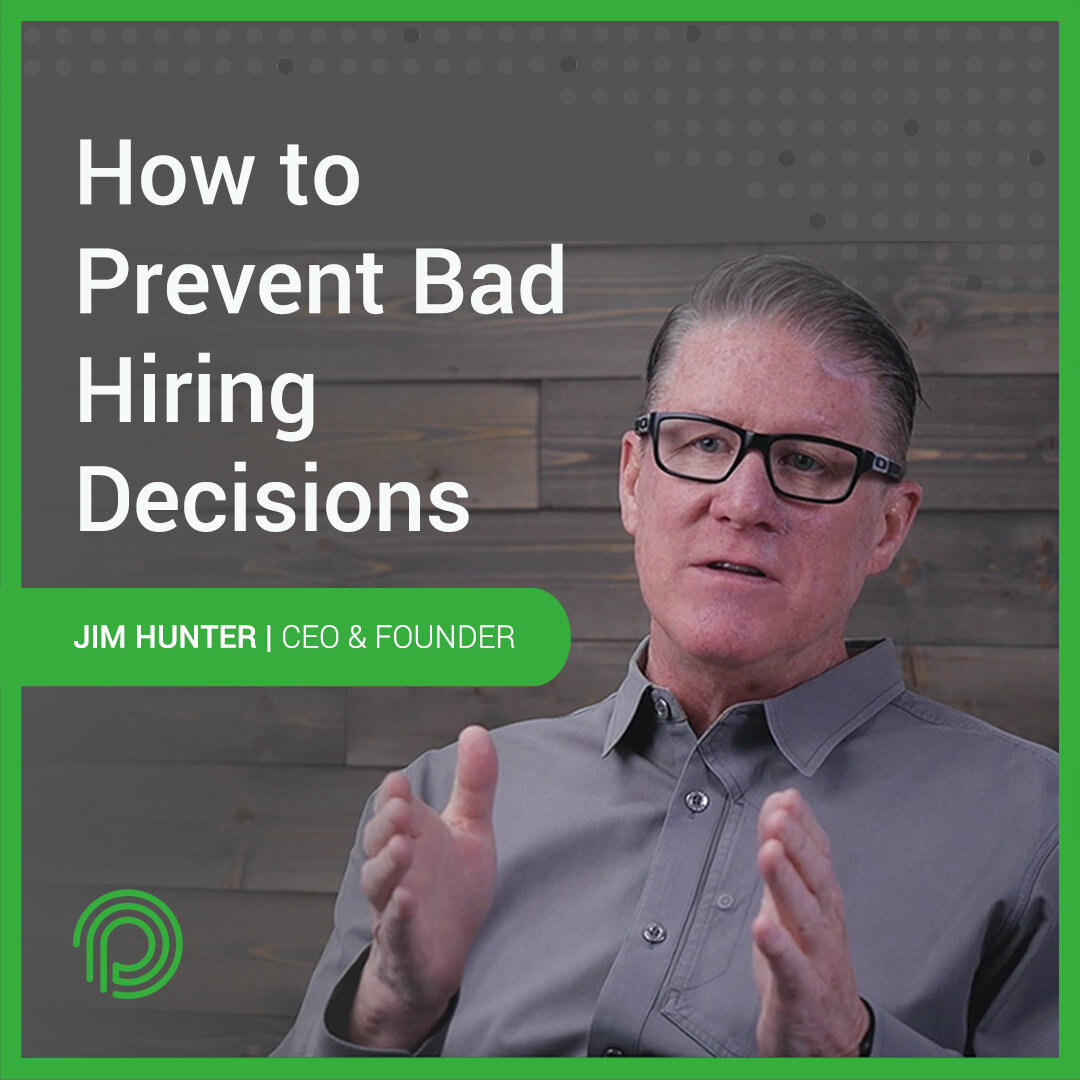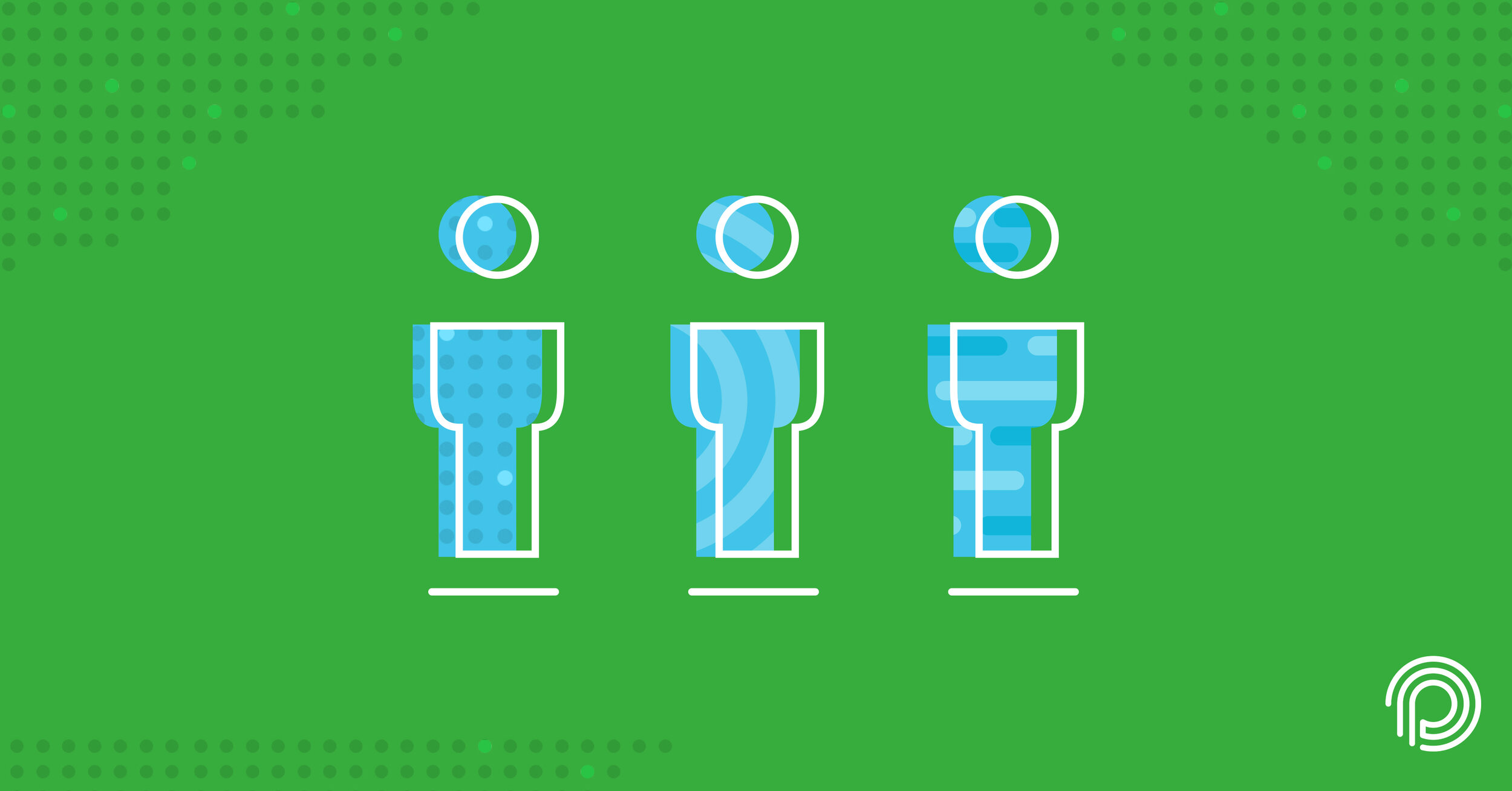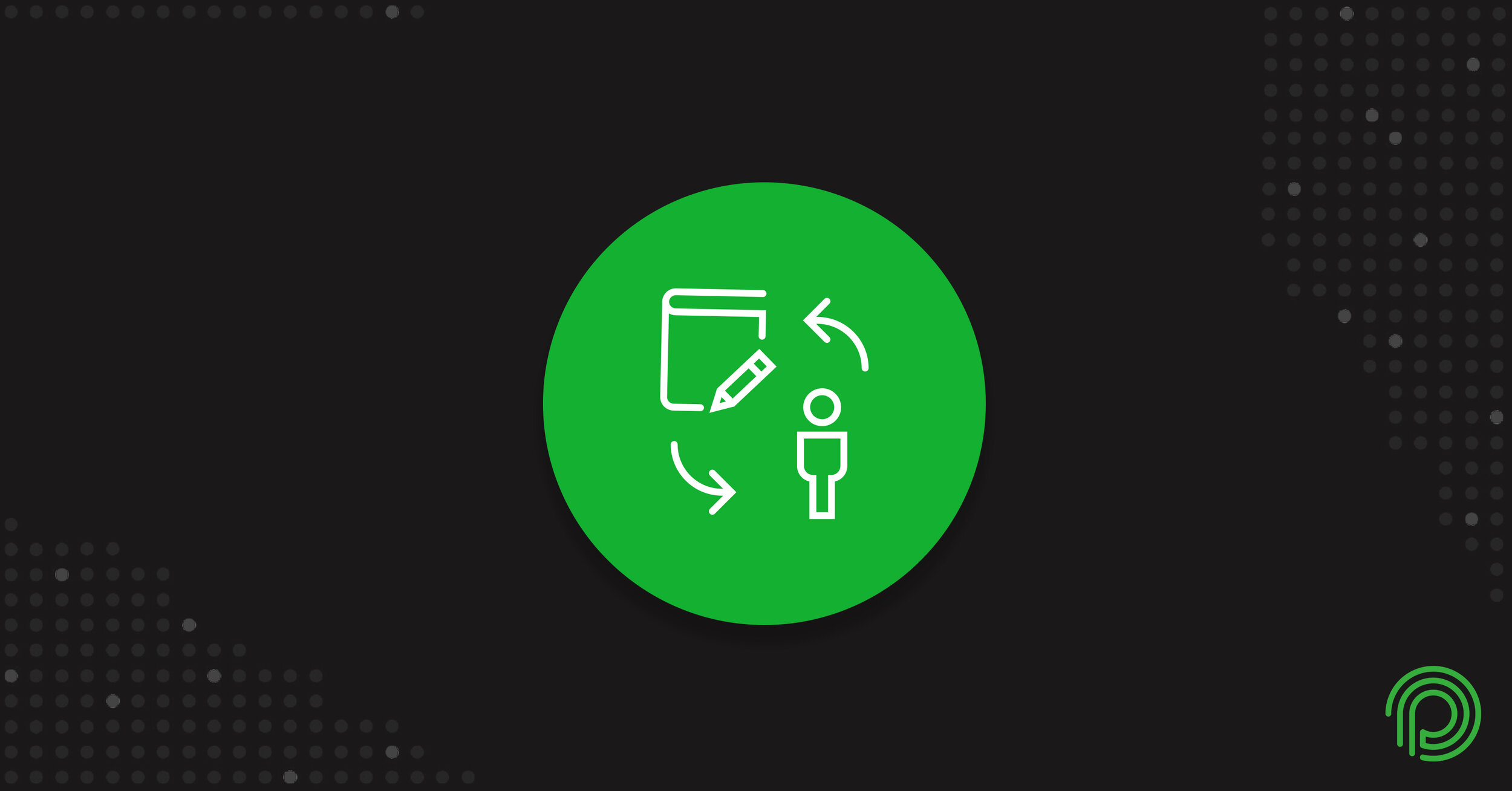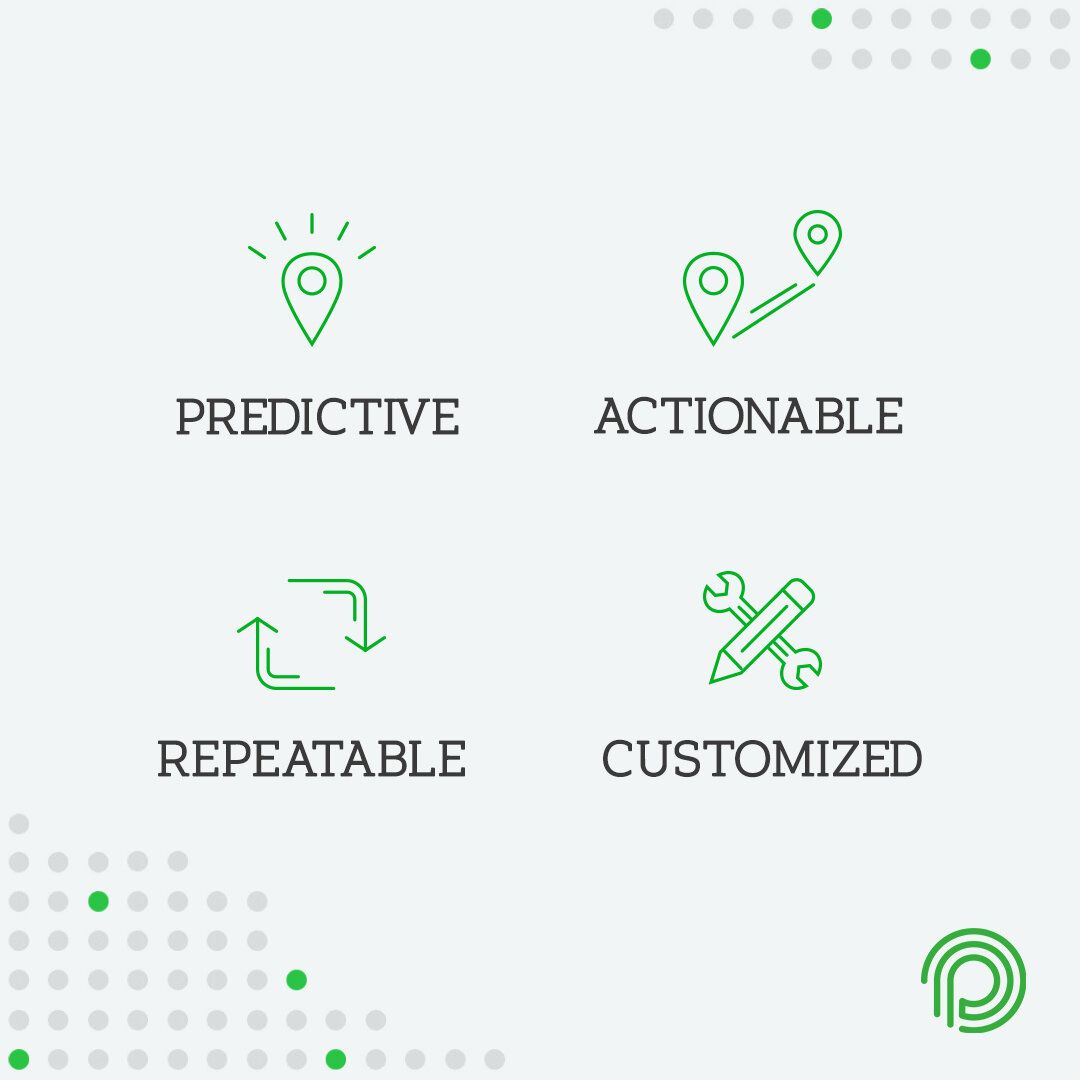PeopleBest started with a belief that a well-rounded tool, system, or company (let’s group them and call them products) should embody the following four attributes. Your product should be:
-
Predictive
-
Actionable
-
Repeatable/Sustainable
-
Customized
Some basic products might check one or two of these attribute boxes, and that’s a good start. But if it doesn’t have all four, you’re not really going to be successful with it. Sure, you might see some marginal improvement, you might even get lucky and find your next superstar, but it isn’t going to be sustainable unless all these attributes are in place and accounted for.
In this video, PeopleBest CEO, Jim Hunter digs deeper into each one and outlines what it means to be predictive, actionable, customized, and repeatable/sustainable.
The 4 Must-Haves of an Effective Hiring Tool (Transcript)
At PeopleBest we’re really passionate about four different principles in terms of how not only we build tools, but if in the marketplace, if somebody is going to be looking at a particular tool we would challenge anybody to really address each and every single one of these four principles. We call it PARC, P-A-R-C. P for predictability. Can this be something that will absolutely not just be accurate? There’s a lot of tools out there. There’s Myers-Briggs, not throwing rocks at any of them, but are do they describe me? Yeah, probably, pretty much, pretty much the case. But the challenge here is in terms of the predictability, can this foretell, if you will, how well somebody is going to do in a particular job, not just who they are but where they’re going to fit in a particular unique job.
The second part, the A, if you will, is the actionability. Once we have this information, be it if we bring somebody on, nobody’s going to be perfect for a particular job, right? Where’s those gaps within a particular person coming on, or for that matter within a particular team? What are those gaps that we need to address? What are those actionable steps to take somebody from where they are to where they need to be? The R, if you will, is repeatable. How do we then take this and make this a concept where the repeatability of a particular job, or in our particular case when we build a job fit, is this repeatable over a sustained period of time? Different types of people, will they fit in this particular role and then how does this grow and repeat separate from any other type of profile tool out there, which is just off-the-shelf, we can then develop a customized repeatable and that’s that last element of customization.
And this is where I challenge anybody to look at how they can customize a particular set of findings that are absolutely unique and specific to that job, and then absolutely unique and specific to that particular company. Because we know every single company is different and truth be told every single job is different. There is no such commonality of a marketing coordinator or an admin person, or a vice president of sales that fits across every single genre, so it needs to be customizable both to that position within that particular company.
Let’s take this concept of PARC and break it down, peel back a little bit. Let’s start with the first element of P for predictability. There’s a lot of profile tools out there, and there’s a lot of profile companies that will approach a project or looking at success in a probably consistent sort of way. Who are the A players, who are the middle of the road B players, and who are perhaps the lower producers, maybe the C players? But the issue really comes in in terms of the particular profile that they’re using because unless there’s a lot of data, it’s not going to be very accurate. If we’re looking at people that… so the A players are a little bit higher in dominance or they’re a little bit more extroverted or something like that, that’s all fine and well, but the issue is there’s not a lot of specificity and there’s not a lot of scalability.
By that I mean, PeopleBest, we’ve broken everything down into 29 particular traits, not just 29 traits but on a one to 10 scale. There’s a high level of specificity within those 29 traits. And then we kick it up a notch and not only just look at the specifics around 29 traits on a one to 10 scale, but we develop specific ranges, bullseyes if you will, that we know exactly where those A players, if you will, the differences and the uniquenesses to that. Then when we start talking about a predictable model, if we’re starting to pull somebody in from off the street, or if looking at somebody if they’re going to be successful, we have an absolute template that is highly specific, extremely unique to that particular job that we can predict success better than anybody within that particular area for that particular job.
The second concept in our PARC is that about actionability or actionable. And so what we mean by actionable is, as we create these Efficacy Attributes or traits, we’re developing a pinpoint accuracy to what is going to be successful in that particular role. Well, as we’ve talked about before, we have 29 Efficacy Attributes and we get very, very specific in terms of where people could fit to be successful. Well, human beings are not cookie cutters, nor would we ever think that everybody needs to look the same. This whole actionability concept is around identifying the gaps.
How is somebody specifically unique to a particular role and where might they need to be so that if we’re bringing somebody on that is still an A player we know they’re going to be successful in the job, they just may not match up in a particular area. So what is that particular area and how can we make that actionable to then help improve that particular person in that particular situation, be it an onboarding process? The unique thing is two, is that’s directly applicable to everybody inside of an organization? Because once again, not everybody’s going to be that “A player” so how do we identify those gaps and then start to build and develop those people to be more successful than they are.
The third element that we talked about is repeatability, having the ability to create a model that can be sustainable over a period of time. Unlike other particular models where they have to be customized to fit a particular concept or a particular job, we want to build a repeatable model that is self-sustaining as you go so you can know absolutely if somebody is going to be successful in it, but then we also kind of create a unique concept called smarter-as-you-go. that gives you the ability to then take data and look at who’s been successful, who hasn’t, maybe who’s left the organization, but use that information to build a little bit smarter model and develop more repeatability as you go as well.
And lastly, the fourth element is that about customization. And this is where I challenge any other profile company to be as unique as we are. When we talk about customization, we really talk about developing a specific model to a specific job within a specific company. Let’s peel that back a little bit more. There’s so many different templates out there from different profile companies that have just this commonality across all jobs. A marketing coordinator, an administrative assistant, a vice president of sales, where this particular template they’ll use to suggest for your particular job in your particular company, this is the template they have.
And that is absolutely positively not the case, we customize every single job unique to that job within that particular company. We look at the A players, B players, and the C players within that particular job in your company to develop that particular job fit because we know every single job is unique and we also know that every single company is unique, so we customize to exactly both of those criteria.








